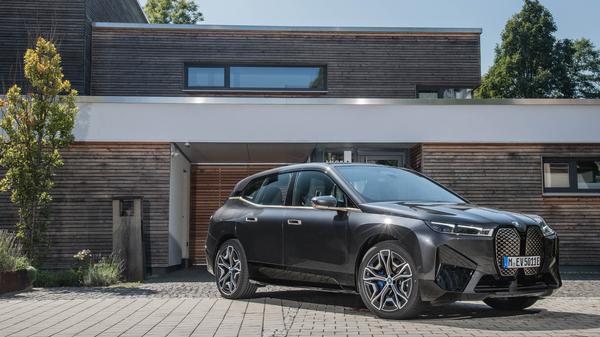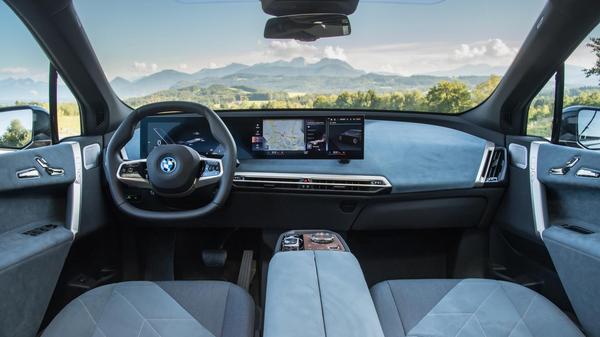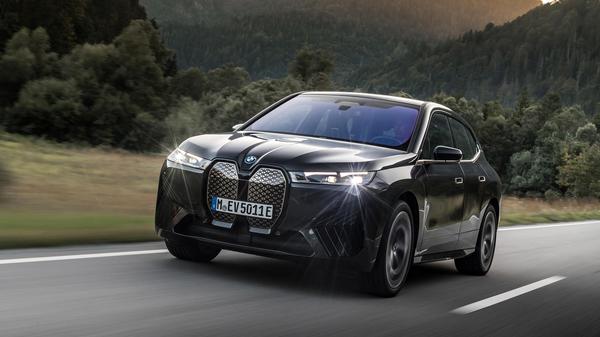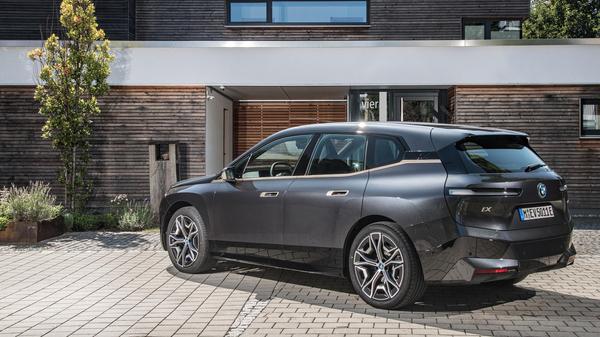News
How the BMW iX puts a sustainable twist on luxury
Why BMW thinks enjoying the finer things in life need not cost the earth – and why buyers seem to agree


Words by: Dan Trent
Published on 20 September 2021 | 0 min read
Electric cars like the new BMW iX trade heavily on their supposedly greener image. But there are rumblings their environmental credentials may not be as pure as people like to think, given building them can actually have a bigger carbon footprint than making regular internal combustion engine (ICE) models.
Luxury buyers are more aware of such issues than ever, given the cars they buy are, by their nature, powerful symbols of not just success but also social consciousness. Some may stick by their unapologetically powerful petrol engines. But BMW has identified an increasing number who want to enjoy automotive opulence with a clean conscience.
Luxury buyers are more aware of such issues than ever, given the cars they buy are, by their nature, powerful symbols of not just success but also social consciousness. Some may stick by their unapologetically powerful petrol engines. But BMW has identified an increasing number who want to enjoy automotive opulence with a clean conscience.

Enter the BMW iX. Pitched unashamedly as a luxury car to be sold alongside existing ICE and hybrid models like the X5, X6 and X7, the iX is not only a technological showcase but also an environmental champion.
Designed from a clean sheet of paper but incorporating all the lessons BMW has already learned in the i3 and i8, the iX uses significant quantities of recycled materials to greatly reduce the CO2 footprint of building it. As much as 60kg of recycled plastic is used in each iX, half of the aluminium used in the structure is re-used and nearly a fifth of the thermoplastics typically used for body panels and other parts is similarly repurposed. On the inside the floormats are made of nylon recycled from old fishing nets while the leather tanning process uses olive leaf extract rather than industrial chemicals. In total the carbon footprint of building an iX has been independently audited as 45 per cent of that for an equivalent ICE SUV, while neat design makes the recycled elements something to celebrate, not be ashamed of.
Designed from a clean sheet of paper but incorporating all the lessons BMW has already learned in the i3 and i8, the iX uses significant quantities of recycled materials to greatly reduce the CO2 footprint of building it. As much as 60kg of recycled plastic is used in each iX, half of the aluminium used in the structure is re-used and nearly a fifth of the thermoplastics typically used for body panels and other parts is similarly repurposed. On the inside the floormats are made of nylon recycled from old fishing nets while the leather tanning process uses olive leaf extract rather than industrial chemicals. In total the carbon footprint of building an iX has been independently audited as 45 per cent of that for an equivalent ICE SUV, while neat design makes the recycled elements something to celebrate, not be ashamed of.

This is especially important for the iX, given electric cars typically ‘cost’ more in CO2 to build. Having already reduced the carbon footprint of its vehicle production by 70 per cent since 2006 BMW is committed to cutting it by a further 80 per cent by 2030, which represents a huge challenge.
It could sidestep that by pointing out that, like for like, building an electric car in one of its factories is actually no worse than an ICE model, putting the CO2 burden on outside suppliers of batteries and other components. Rather, it insists all its partners – from those mining the lithium for the batteries to those providing the aluminium used in the structure – all meet stringent sustainability standards to match its own internal programmes of only using renewable energy sources to power its factories and other such measures. It has also innovated in the way it builds the electric motors powering the iX, replacing the rare earth dependent magnets used by most manufacturers with electrically charged copper and iron instead. This has the added benefit of making the motors more powerful and efficient, as well as less dependent on precious raw materials from environmentally sensitive regions. Elsewhere huge effort has gone into making the iX as aerodynamically efficient as possible, low-drag wheels contributing nine miles of range on their own.
It could sidestep that by pointing out that, like for like, building an electric car in one of its factories is actually no worse than an ICE model, putting the CO2 burden on outside suppliers of batteries and other components. Rather, it insists all its partners – from those mining the lithium for the batteries to those providing the aluminium used in the structure – all meet stringent sustainability standards to match its own internal programmes of only using renewable energy sources to power its factories and other such measures. It has also innovated in the way it builds the electric motors powering the iX, replacing the rare earth dependent magnets used by most manufacturers with electrically charged copper and iron instead. This has the added benefit of making the motors more powerful and efficient, as well as less dependent on precious raw materials from environmentally sensitive regions. Elsewhere huge effort has gone into making the iX as aerodynamically efficient as possible, low-drag wheels contributing nine miles of range on their own.

This huge investment in technology, plants and processes is a massive project for a business as big as BMW, and the technology in the iX will doubtless benefit other brands within the group, such as Rolls-Royce. While the pedigree of the latter very much depends on the hand-crafted skill at its Goodwood-based factory there is no escaping much of the heavy engineering comes from BMW. And, perhaps, it’s no accident the iX has more than a hint of Cullinan in its design.
Building an electric Rolls-Royce will require much more than sticking a Spirit of Ecstasy figure atop the grille of an iX, of course. But, when the moment comes, buyers of such a car can rest assured that the most unashamed expression of luxury does not have to cost the earth.
Building an electric Rolls-Royce will require much more than sticking a Spirit of Ecstasy figure atop the grille of an iX, of course. But, when the moment comes, buyers of such a car can rest assured that the most unashamed expression of luxury does not have to cost the earth.
